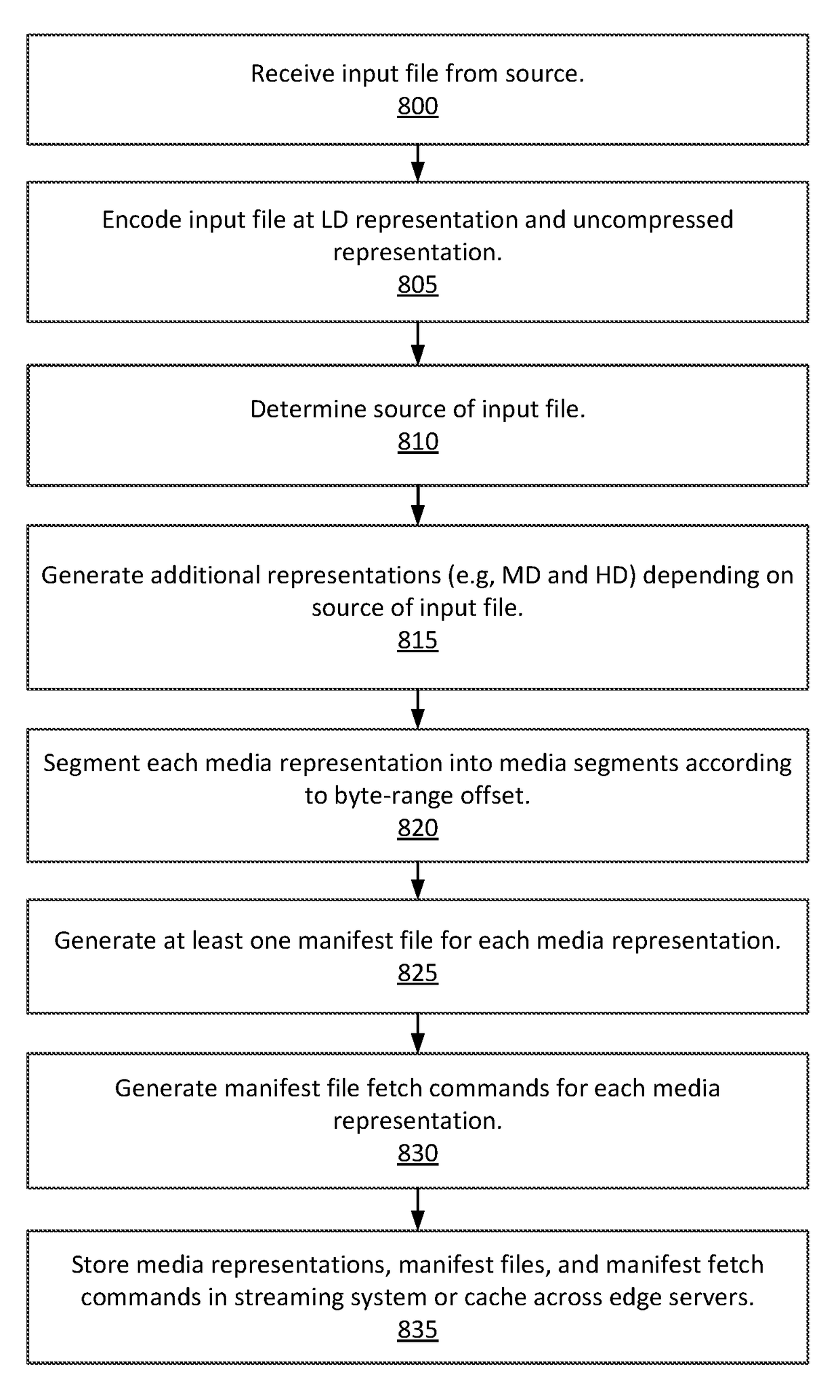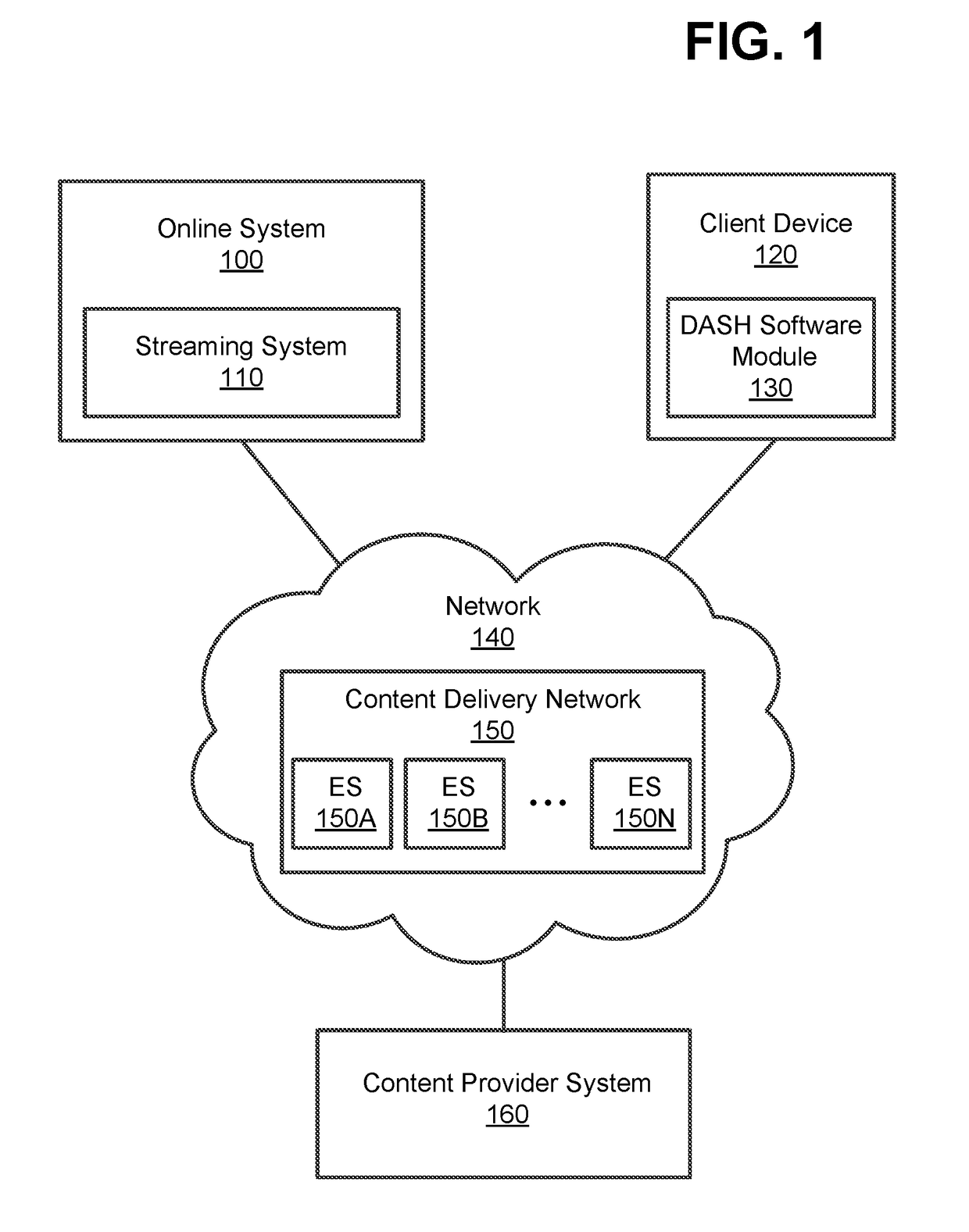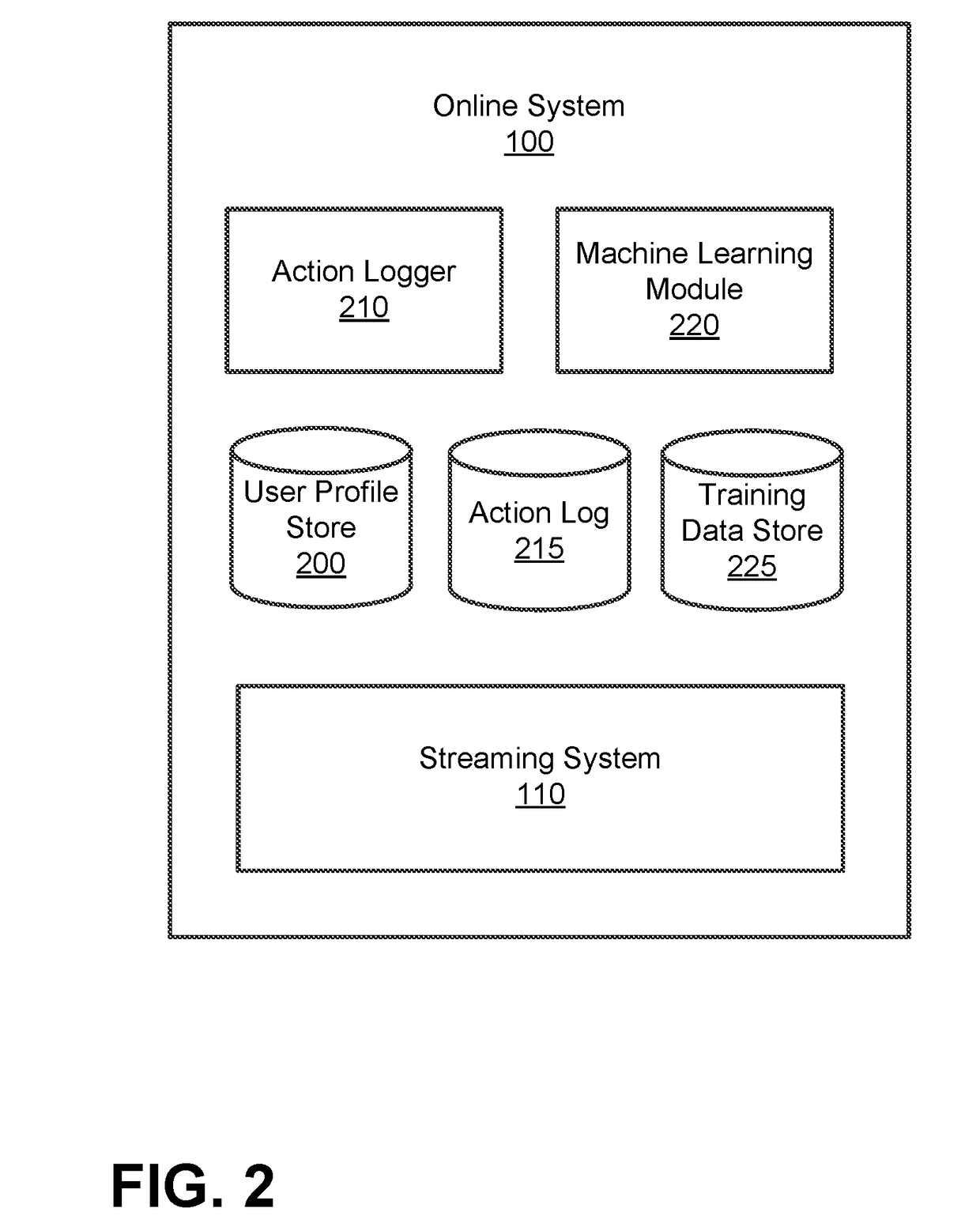Adaptively updating content delivery network link in a manifest file
a content delivery network and manifest file technology, applied in the field of online digital content streaming, can solve the problems of increasing platform latency, user engagement is decreased, and the user experiences platform latency on the online system, and achieves the effect of enhancing dynamic adaptive streaming, efficient streaming multimedia content, and not wasting bandwidth on unneeded pixels
- Summary
- Abstract
- Description
- Claims
- Application Information
AI Technical Summary
Benefits of technology
Problems solved by technology
Method used
Image
Examples
Embodiment Construction
I. System Overview
[0021]FIG. 1 is a block diagram of a system environment for providing multiple instances of a live or on-demand media file (e.g., a video file) to clients having varying delivery bandwidth and CPU processing power according to one embodiment. The system environment includes an online system 100, a client device 120, and a content provider system 160 connected to each other over a network 140. In other embodiments, different and / or additional entities can be included in the system architecture.
[0022]The client device 120 is a computing device capable of receiving user input as well as transmitting and / or receiving data via the network 140. In one embodiment, a client device 120 is a conventional computer system, such as a desktop or laptop computer. Alternatively, a client device 120 may be a device having computer functionality, such as a personal digital assistant (PDA), a mobile telephone, a smartphone or another suitable device. A client device 120 is configured...
PUM
 Login to View More
Login to View More Abstract
Description
Claims
Application Information
 Login to View More
Login to View More - R&D
- Intellectual Property
- Life Sciences
- Materials
- Tech Scout
- Unparalleled Data Quality
- Higher Quality Content
- 60% Fewer Hallucinations
Browse by: Latest US Patents, China's latest patents, Technical Efficacy Thesaurus, Application Domain, Technology Topic, Popular Technical Reports.
© 2025 PatSnap. All rights reserved.Legal|Privacy policy|Modern Slavery Act Transparency Statement|Sitemap|About US| Contact US: help@patsnap.com



